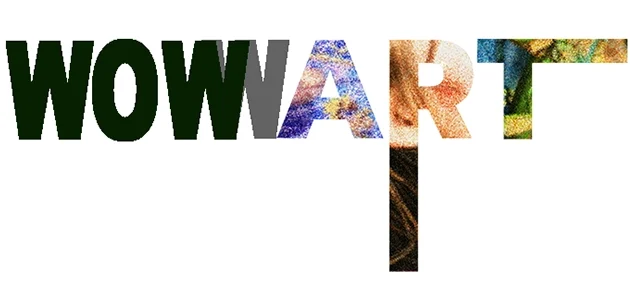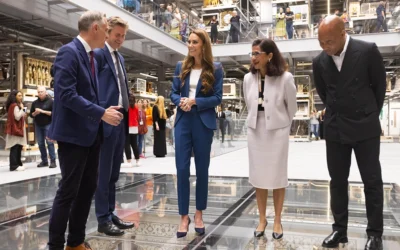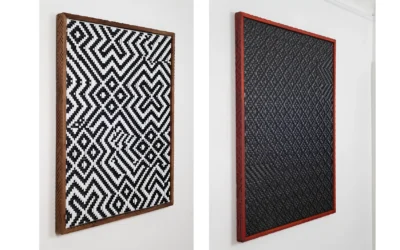Rick Briggs Explores The Transformative Power Of Abstraction And Materiality In His Artistic Practice

A Journey Of Risk, Mystery, And Artistic Freedom
Rick Briggs discusses his artistic evolution, the liberating nature of abstraction, his material-based experiments, and the balance between personal expression, identity, and the transformative power of process in painting.
Rick Briggs is a masterful artist whose work resonates with a profound sense of exploration and authenticity. His paintings, deeply rooted in his personal experiences and artistic journey, are a testament to his fearless experimentation with form, materiality, and process. Briggs’ ability to balance the unpredictable with the intentional has resulted in a body of work that is both innovative and deeply human. His contributions to the art world have been widely recognized, with prestigious accolades such as the John Simon Guggenheim Memorial Foundation Grant and the Pollock Krasner Foundation Grant, as well as exhibitions in esteemed institutions like the Brooklyn Museum and the American Academy of Arts and Letters. Beyond his studio practice, Briggs’ insightful art criticism further underscores his deep engagement with the art community.
In this interview, Briggs offers a rare glimpse into the transformative processes that define his work, from his early experiments with abstraction to his more recent material-based explorations. He reflects on the interplay between his life and his art, the challenges of navigating identity and class, and the liberating power of embracing risk and uncertainty. With a career marked by constant reinvention and a commitment to his artistic impulses, Rick Briggs continues to push the boundaries of contemporary painting, creating works that are as thought-provoking as they are visually compelling.
How has your exploration of abstraction influenced your overall artistic style?
I’ve always been very interested in the form of painting, and the importance of materiality, process, and experimentation. Abstraction seems to lend itself more readily to inventiveness and it hasn’t had to deal with the weight of art history to the extent representational painting has – I find this freeing. From my earliest forays into painting when I was pouring and scattering paint, to gluing smaller canvases onto larger, shaped ones, to using paint rollers, I’ve wanted to have an experience with the paint where I didn’t know the outcome in advance, that involved mystery and risk, but would somehow ultimately make sense through a faith in the process. My life is always filtering into the work as well. For example, with a recent series of material-based paintings, I began adding the detritus from my day job of house painting. So paint rollers, stir sticks, various tapes, and paint skins are attached to the surface. I work on a piece with an emphasis on the material and formal elements until something content-related begins to emerge – be it the beginnings of an image or some barely conscious feeling – then I seize upon that and bring the painting to fruition.
The transformation process in your paintings is often more significant than the time it takes to complete them. Can you describe an instance where this transformation had a major impact on your creative journey?
The most important thing is to imbue a painting with life (i.e., the transformative part) so the amount of time that takes is irrelevant. I can make a painting in a day or it could take me years. When I was transitioning from a narrative series to an abstract series, I was having trouble figuring out a painting that had lots of interesting little areas but as a whole, it didn’t gel. In a fit of frustration, I took out a paint roller and white house paint and quickly painted it all out. The activity of painting it out was immensely satisfying! I kept working on it until I had a satisfactory painting. The immediacy of that action has inspired a lot of my work with paint rollers since then.
In your previous works, the incorporation of recognizable imagery allows you to delve into themes of identity and class. How do you see this shift in relation to your abstract work before and after the Painter Man series?
I work based on what I need to express, regardless of the form it takes. Painter Man allowed me to concoct a darkly humorous narrative about an artist who was locked into his day job as a housepainter. These paintings were a fantasy based upon my personal experience but I also was aware of them as a kind of class critique, where the Damien Hirst’s of the art world that were making record auction prices while I, and almost every artist I knew, had to work a day job to survive. This series received a lot of accolades but once I’d told the story, I knew it was time to move on. A friend questioned this, saying: “But what about your responsibility to your audience?” But my only thought was that my primary responsibility was to my own artistic impulses, regardless of the consequences.
Your work emphasizes simplicity in form and color. What challenges arise when working with a limited palette, and how do you navigate these to achieve your desired effects?
Limitations are helpful when focusing on a specific area of investigation. For example, I don’t mix white in with my color, but I don’t feel restricted color-wise. I apply paint straight from the jar and the color mixes on the canvas. I’m really interested in creating light via the color interactions and working with transparencies. In terms of form, I remember an important early painting that was a big struggle but when it was finished, I had painted out most of it and was left with a reductive abstraction that had plenty of breathing room. It was very meditative and I thought: I’ve found my personal sense of space!
More recently I’ve been using 9-inch paint rollers vertically, as if I were painting a wall. With these new paintings, any mishaps, skips, or drips are welcomed and the process of making the painting is emphasized as much as the rhythm of the color swaths. Also, your question reminds me of a recent experience I had at a show of Rothko drawings. I was amazed at the incredible variety of color situations and paint applications within his strict format.
Certain pieces mark a mature stage in your artistic development. What experiences or realizations have contributed to this sense of maturity, and how might this influence your future work?
As one ages, one becomes increasingly aware of the brevity of time. It creates a ‘now or never’ mentality that is liberating. I don’t know what the future of my work will be but I know it will be exciting!
EDITOR’S HIGHLIGHTS
Empowering Art & Artists Globally
“Being featured in WOWwART means gaining visibility not just in print edition, but across the entire media spectrum in the US, UK, Europe and beyond”

EDITOR’S HIGHLIGHTS
Media, Art and Artist
Media is a powerful tool to build relationships, boost visibility, influence decisions, and create lasting impressions for success and growth.













